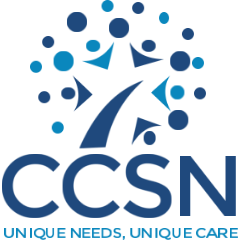
Your child’s Individualized Educational Program, or IEP, is one of the most important parts of their education. The IEP provides the specifics of what instruction should include, what will be taught, and how success will be measured. It also includes those accommodations, supports, and modifications that must be provided based on your child’s individual needs in order for him/her to access and benefit from the educational plan that has been developed. These last elements of the IEP—the accommodations, supports, and modifications—are included on Page 8 of the IEP. We want to explain what to look for on Page 8, and how to introduce modifications to Page 8 that will best support your child.
As part of the IEP, educational teams are required to identify specific tools to best support students in accessing the curriculum and extracurricular activities.
Definitions:
- Accommodations are educational supports (e.g., braille, extra time, printed teacher presentations) that help students to access the curriculum provided to everyone, but do not change the content of what the student is learning.
- Modifications are changes to the content the student is required to learn.
Requirements & Tips When Developing Page 8 Content:
- Accommodations and modifications must be SPECIFIC and APPROPRIATE to meet the needs of each individual student.
- For example, “preferential seating” may be too vague. Instead consider a descriptive option attached to the IEP on a separate sheet such as:
- “Seated in back of room to reduce disruption during breaks”
- “Seated next to model peers”
- “Seated in front of room near board”
- For example, “preferential seating” may be too vague. Instead consider a descriptive option attached to the IEP on a separate sheet such as:
- Assistive Technology MUST be considered, such as electronic schedules and access to a device (e.g., iPad or ChromeBook).
- Both the location and duration of modifications, supports, or accommodations must be included, indicating where and when they are required. These may be necessary in academic classes, non-academic classes, and extracurricular activities.
- Accommodations that a student needs to access the curriculum must be written EVEN if they are part of the teacher’s regular practice.
- “Frequency and Duration of Supports Required for School Personnel to Implement the IEP” should be specific (for whom, by whom, when, and how long) and may include:
- Teacher training
- Teacher collaboration and consultation time
- Paraprofessional support across the school day
- Paraprofessional support for specific classes or activities during the school day
- Come Prepared - research common educational modifications and accommodations specific to your child’s disability.
- For example, the use of visual schedules will commonly help students with Autism Spectrum Disorder to complete a multi-step task or sequence of actions.
- While there are many other “universal supports”, remember that neither an exhaustive list nor very limited list is likely to be a perfect match for your child, but it may help generate ideas. Choose or write in those that meet your child’s individual needs.
Ultimately, your child’s IEP page 8 should have modifications, supports, and accommodations that are thoughtfully selected based on what has worked in the past and what is needed for your child to be most successful in the future.
To learn more about how our team at CCSN can support you in your educational planning for your student, contact us
Resources to learn more about your student’s IEP: CT State Department of Education (2015). The PPT Guide: Page-by-Page.

